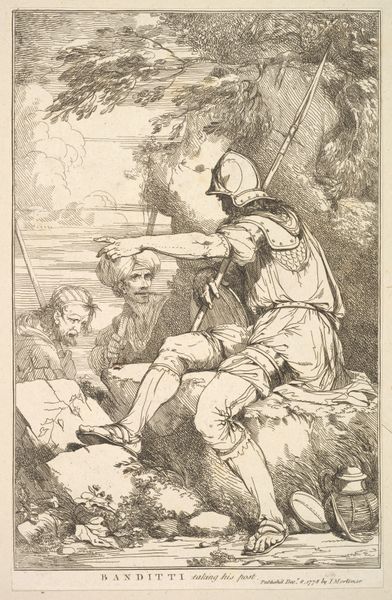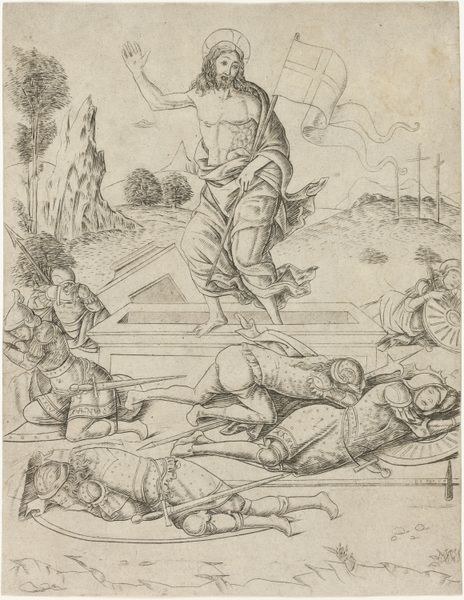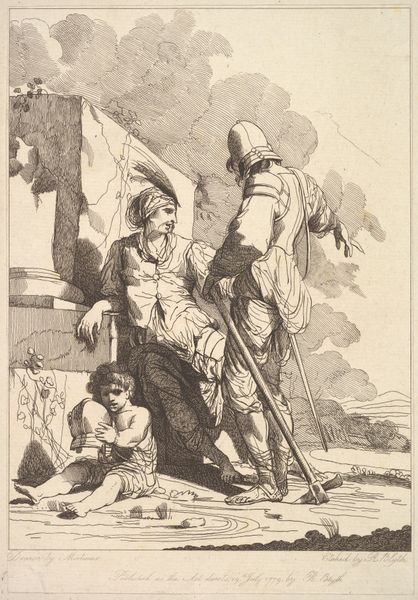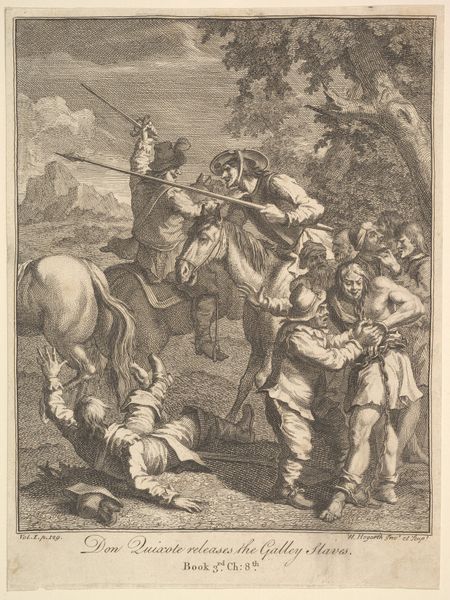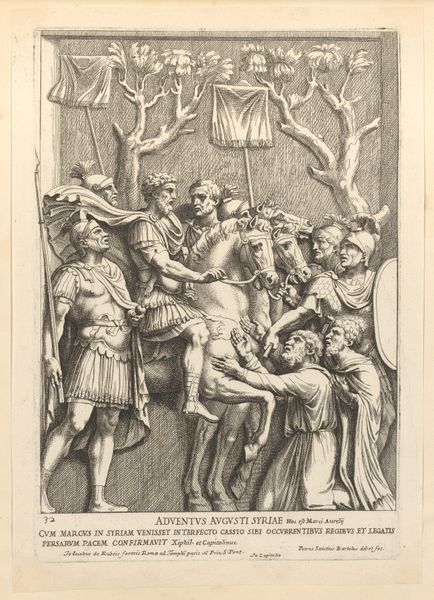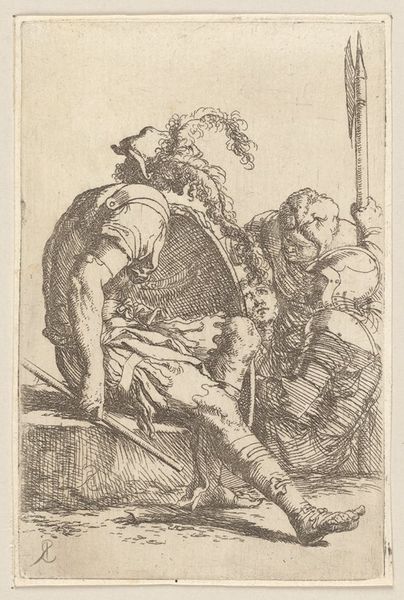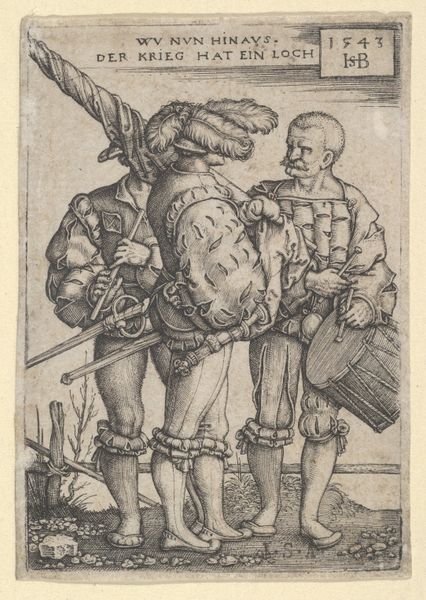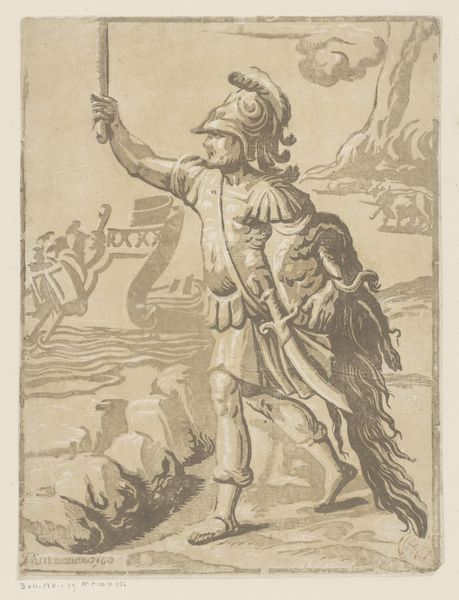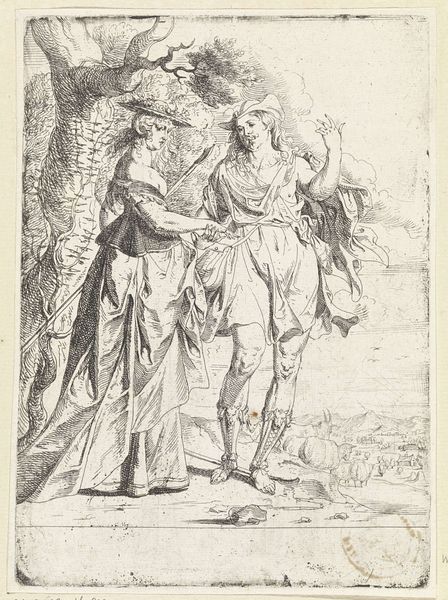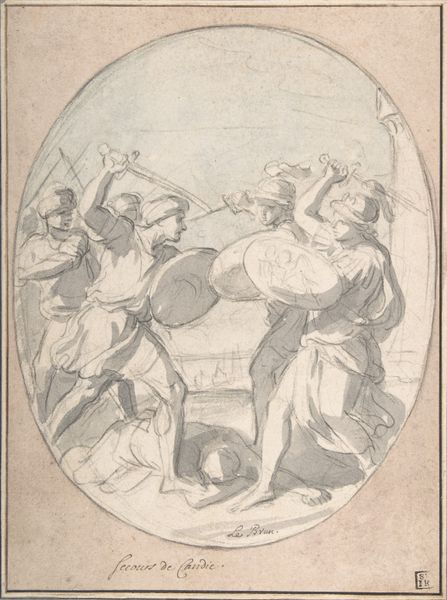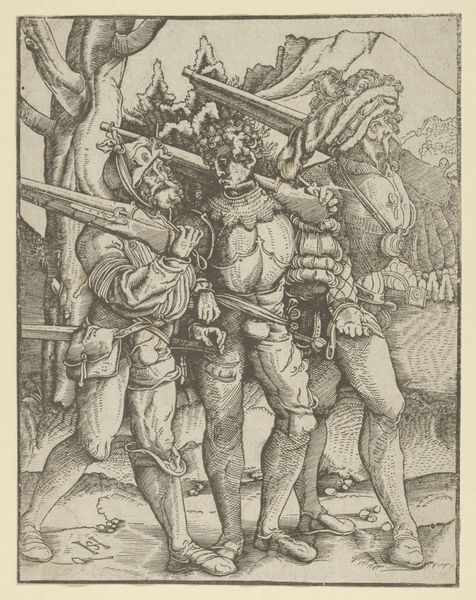
A Captain of Banditti Sending Out a Party, from "Fifteen Etchings Dedicated to Sir Joshua Reynolds" 1778
0:00
0:00
drawing, print, etching, pen, engraving
#
landscape illustration sketch
#
drawing
#
ink drawing
# print
#
pen sketch
#
etching
#
pencil sketch
#
landscape
#
personal sketchbook
#
ink drawing experimentation
#
soldier
#
pen-ink sketch
#
men
#
pen work
#
sketchbook drawing
#
pen
#
history-painting
#
sketchbook art
#
engraving
Dimensions: Sheet: 11 5/16 x 7 5/16 in. (28.8 x 18.6 cm)
Copyright: Public Domain
Editor: This is "A Captain of Banditti Sending Out a Party" an etching from 1778 by John Hamilton Mortimer, currently at the Metropolitan Museum of Art. The scene has an unsettling vibe, with all these armed men sketched in such stark detail. What's your take on this piece? Curator: Look closely at the *process* here. Mortimer uses etching, a printmaking method that democratized image production in the 18th century. Prints weren't precious unique objects. They were reproducible, consumable. Note the level of detail achievable with etching, despite it being a relatively 'low' art form compared to painting. Why do you think Mortimer chose etching to depict this scene of banditry? Editor: Maybe to reach a wider audience with his narrative? What’s the social commentary aspect here? Curator: Precisely! Consider the social context. "Banditti" – often romanticized figures – challenge the established order. Mortimer is highlighting power dynamics, who has access to resources, who is deemed 'criminal'. Etching, a commercially viable medium, allows him to disseminate this image widely, sparking a dialogue about class and control. Notice also the emphasis on clothing, adornment, arms as material indicators of the figures’ status. Do you think Mortimer fully condemns the bandits or complicates the picture? Editor: I guess it's more complex. He depicts them with enough detail to be almost sympathetic. The material trappings, the weapons – it all hints at a kind of forced criminality. It wasn’t their original design maybe. Curator: And what about the implied viewer? The print as commodity invited broader commentary and consumption. So, by engaging with Mortimer's materials and the context of their use, we can unlock so much more depth and commentary. Editor: Right, it gives it all a new weight when thinking about it not just as a historical image but about who it was *for*. Thanks, that’s changed how I’ll look at etchings from now on.
Comments
No comments
Be the first to comment and join the conversation on the ultimate creative platform.
